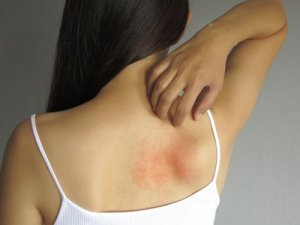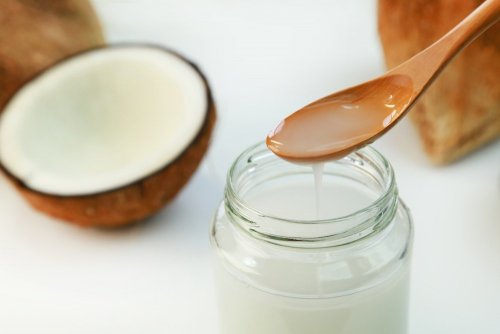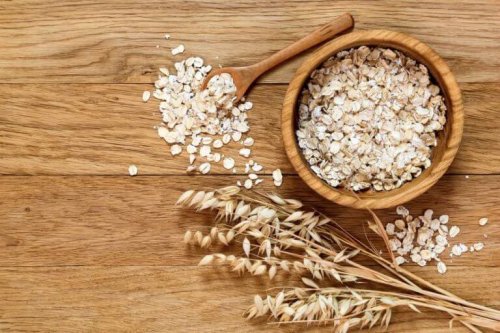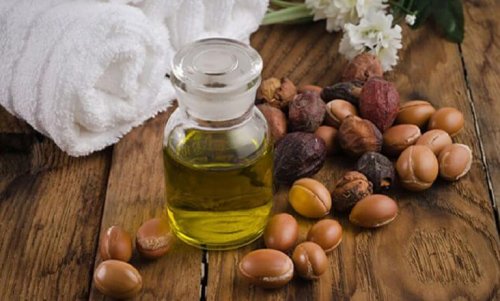5 Topical Remedies to Relieve Rashes

A rash may appear for several different reasons. It can be the result of an allergy or something else that irritates the skin. It is usually characterized by small red patches, irritation, and itching. Sometimes a rash can cause pain, it can peel, or it can have small bumps. In this article, we’ll take a look at some ways to alleviate rashes.
Treatment of rashes depends on the cause of the rash. However, there are topical treatments, such as lotions and creams, that are often used. There are also some natural remedies that can help alleviate a rash.
Keep reading to find out about 5 different natural remedies that can calm rashes.
Topical Remedies for Alleviating Rashes
Most rashes are mild and disappear in a few days. Some occur immediately, while others develop over a period of time. In any case, they are irritating and uncomfortable because they oftentimes itch or burn. Symptoms can also worsen if not treated.
Treatment of a rash depends on its cause. Therefore, it’s best to consult a doctor first to know exactly why you are experiencing a rash.
Regardless of the cause, however, there are some natural remedies that can help relieve the symptoms of rashes.
Discover: Nightly Skin Routine: Seven Tips
1. Coconut Oil for Rashes

Organic coconut oil is one of the best home remedies to calm a rash. It contains fatty acids, antioxidants, vitamins, and minerals that improve the health of the skin. Additionally, it’s very moisturizing and decreases allergic reactions.
How to Use It
- Use 100% pure organic coconut oil.
- Take a small amount and apply it directly on the skin as if it were a cream.
- Then, rub it on the area until it is absorbed completely.
- Leave it without rinsing and repeat again the next day.
2. Baking Soda
Baking soda has several properties that help restore the skin’s pH level, which makes it one of the best ingredients to calm rashes and allergic reactions. It also has a slight anti-inflammatory effect that can decrease irritation and burning.
Ingredients
- 4 tablespoons of baking soda (60 g)
- 1/4 cup of distilled water (62.5 ml)
How to Use It
- First, prepare a paste with the baking soda and distilled water.
- Then, apply it to the affected areas.
- Let it sit for 10 minutes, and then rinse with warm water.
- If symptoms persist, repeat.
3. Oatmeal

Oatmeal can be used for various therapeutic and cosmetic purposes. It has powerful antioxidant and anti-inflammatory properties that make it one of the best ingredients to calm rashes and other skin allergies. It can even be used for burns and other injuries.
How to Use It
- One option is to put a cup of oatmeal in a tub of water and bathe in it for 30 minutes.
- You can also mix it with distilled water and create a frothy paste. Then, apply it directly to the rash and let sit for 20 minutes.
- Use it for three consecutive days or until the discomfort of the rash is relieved.
4. Chamomile Essential Oil
Chamomile essential oil, and even tea, can be used as a topical treatment for rashes. It has soothing properties that minimizes any irritation and brings relief to the rash.
How to Use It
- Add a little chamomile essential oil to bathwater and take a 20 minute bath.
If you prefer to use the plant as a cream, you can as well:
- Make an infusion of the plant and apply to the affected area.
- Let sit without rinsing and repeat two times a day.
Also read: 6 Home Remedies to Treat Contact Dermatitis
5. Jojoba oil

Another oil with anti-inflammatory properties is jojoba oil. This oil moisturizes the skin and reduces irritation. It also helps the skin to better absorb other topical medications.
How to Use It
- Take a small amount of jojoba oil and rub it on the affected area.
- Let sit and do not rinse.
- Repeat twice a day if necessary.
In Conclusion
You can use many different natural products to control rashes and other skin irritations. However, remember that it’s important to see a doctor to determine the cause of any rash.
Whatever the case, these five remedies will help relieve most rash symptoms.
All cited sources were thoroughly reviewed by our team to ensure their quality, reliability, currency, and validity. The bibliography of this article was considered reliable and of academic or scientific accuracy.
- Milstone, L. M. (2010). Scaly skin and bath pH: Rediscovering baking soda. Journal of the American Academy of Dermatology. https://doi.org/10.1016/j.jaad.2009.04.011
- Reynertson, K. A., Garay, M., Nebus, J., Chon, S., Kaur, S., Mahmood, K., … Southall, M. D. (2015). Anti-inflammatory activities of colloidal oatmeal (Avena sativa) contribute to the effectiveness of oats in treatment of itch associated with dry, irritated skin. Journal of Drugs in Dermatology : JDD.
- Fowler, J. F., Nebus, J., Wallo, W., & Eichenfield, L. F. (2012). Colloidal oatmeal formulations as adjunct treatments in atopic dermatitis. Journal of Drugs in Dermatology : JDD.
- Singh, O., Khanam, Z., Misra, N., & Srivastava, M. (2011). Chamomile (Matricaria chamomilla L.): An overview. Pharmacognosy Reviews. https://doi.org/10.4103/0973-7847.79103
- Wisniak, J. (1994). Potential uses of jojoba oil and meal – a review. Industrial Crops and Products. https://doi.org/10.1016/0926-6690(94)90077-9
This text is provided for informational purposes only and does not replace consultation with a professional. If in doubt, consult your specialist.








